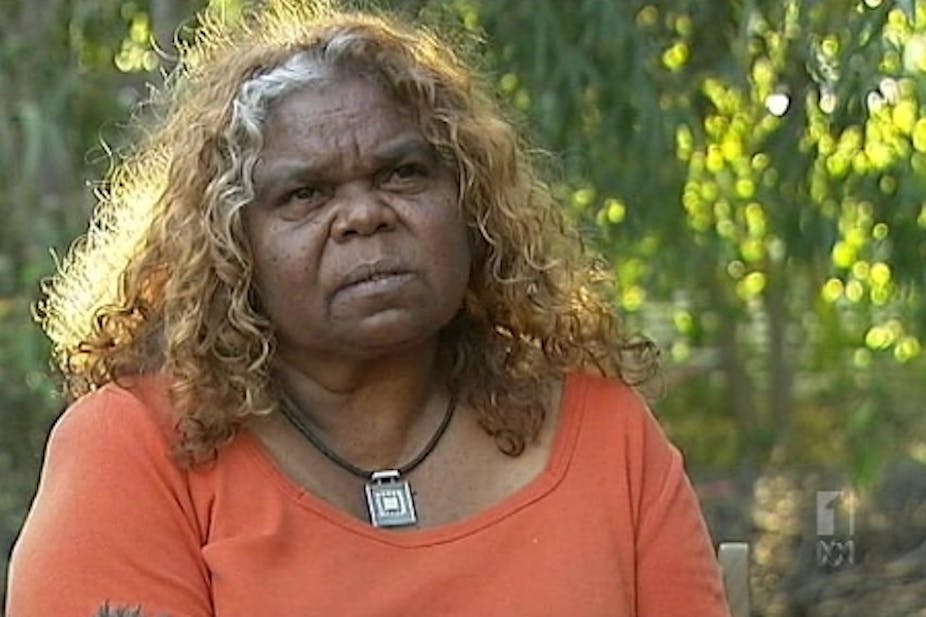The Northern Territory Legislative Assembly is unique among Australia’s parliaments for its proportion of Indigenous members. They are drawn from both the Labor (ALP) and Country Liberal (CLP) parties, and it is likely that the level of indigenous membership (currently 5 out of 25) will, at the very least, remain constant after Saturday’s election.
Indigenous affairs polarises Northern Territory politics, and the 12 year old ALP government’s poor record in this area partly explains its failure to retain the support of Indigenous ministers and was the catalyst for the Commonwealth’s “Intervention”.
Alison Anderson’s resignation from the government in 2009 showed that representation does not always lead to improved policy outcomes, while her decision to join the CLP and contest Saturday’s election as its candidate in the seat of Namatjira is, perhaps, part of a reconfiguration of the Territoy’s Indigenous politics.
Anderson, who is expected to win the seat, is one of 5 Indigenous CLP candidates (to the ALPs 6), and part of an obvious and concerted effort to take advantage of Indigenous dissatisfaction with the Henderson Government. Along with Anderson and Adam Giles in Braitling, Indigenous candidates are representing the party in the seats of Arafura, Arnhem and Stuart where Indigenous populations of between 73% and 83% have the potential to reverse very large Labor majorities.
CLP candidates, Larissa Lee (Arnhem), Bess Price (Stuart) and Francis Xavier (Arafura) will no doubt be relying on policies such as community managed schools and homeland and outstation housing development to present their party’s case to the electorate. However, these Indigenous candidates face a difficult task in seats that a well aware of their party’s sometimes overtly racist history in Indigenous affairs.
For example, Price, who has developed a national profile defending the “Intervention”, requires a 15.1% swing to take Stuart from the Indigenous sitting member, Karl Hampton, who has held the seat for the ALP since a by-election in 2006.

Price is an apologist for the CLPs controversial proposal to confine persistent alcohol abusers to prison farm rehabilitation; a policy which might alternatively be seen as a “tough” anti-Indigenous measure designed to appeal to non-Indigenous voters in marginal Darwin seats, where the CLP has lost support over the past decade. On the other hand, its new found interest in courting the Indigenous vote reflects, at least in part, a pragmatic necessity to broaden its support base.
A further interesting dimension to a contest where every Indigenous vote truly counts is that, for the first time, the Australia’s First Nations Political Party provides Indigenous voters the opportunity to express their political voices independently of the major parties.
The new party is contesting eight seats on a policy platform that privileges traditional cultures, local governance arrangements, viable outstation economic development, bi-lingual education, and compulsory national service for people under 18 years of age who are not otherwise engaged in education. Its policies a firmly grounded in a conception of self-determination.
The fact that by Wednesday night only 1511 people had visited the party’s website would ordinarily suggest a lacklustre campaign. However, in the Northern Territory the rules of election campaigning are unique. The Legislative Assembly’s 25 single member constituencies each contain fewer than 5000 voters, so it is possible for candidates to be personally acquainted with almost every voter.
Personal standing and community relationships can compete with party affiliation as the principal determinant of voting behaviour. Well known and popular candidates, in a jurisdiction where candidates’ photographs appear on ballot papers, are well placed to use personal relationships to their advantage. In the largely Indigenous seats these cultural relationships are particularly important.
Many commentators are predicting a close contest across the Territory. However, whatever the final outcome, this election is distinguished from those elsewhere in Australia by the potential for considerable Indigenous influence. Whether or not this influence achieves policy significance will be a measure of broader Indigenous political strategy and the extent of Indigenous peoples’ confidence to engage with a political system that is not their own.
It is, instead, a system that has traditionally subsumed Indigenous concerns beneath other priorities and has an established history of considered discrimination.

